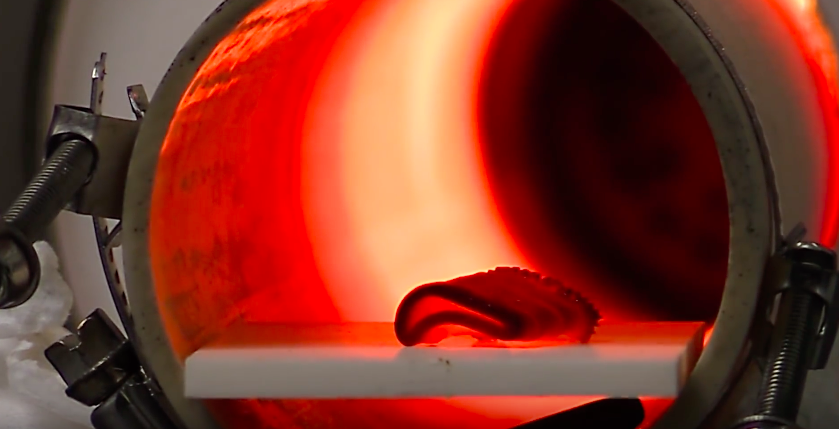In January 2016, Malibu, California-based HRL Laboratories announced that they had developed a new method of 3D printing polymer-derived ceramics into complex shapes. This involves a pre-ceramic Silicon Oxycarbide (like Silicon Carbide but with some residual Oxygen) resin modified to resemble a polymer.
The resin is suitable for 3D printing via stereolithography (SLA). During this process resin is selectively hardened using a laser, eventually producing a 3D printed object.
Once this object is kiln-fired, it turns into a dense ceramic. This dense quality gives the object higher strength, higher resistance to heat (up to 1700 degrees Celsius) and lower thermo-conductivity than alternatives, making it especially suitable for applications to resistance to high temperatures. Its application in superconductors, and perhaps more evidently to space- rockets has seemed inevitable.

Enter NASA
Sure enough, HRL has now been awarded a grant by NASA’s Space Technology Research, Development, Demonstration, and Infusion programme to develop ceramic engine components. Speaking to 3D Printing Industry, Dr Schaedler explained that the new technology allowed “lower cost, faster fabrication and new designs that are impossible or hard to realise with conventional manufacturing approaches”.
These conventional processes for involve the welding of multiple parts over a period of months. 3D printed parts, on the other hand, can be produced in a matter of hours.

But the material is not without its drawbacks. Schaedler admits that despite eliminating the problems of density associated with ceramics, “shrinkage is observed on converting the polymer to ceramic and needs to be accounted for…as typical for ceramics the material is brittle and has a low fracture toughness”. However, as far as the ceramic technology’s current applications are concerned, low tensile strength does not appear to be a problem.
Lift-off
In a press release, HRL announced that they would subcontract to satellite launch company Vector for testing the rocket engine components. HRL, owned jointly by General Motors and aircraft manufacturer Boeing, has also stated that it is developing the technology for application in jet engines, hypersonic vehicles and molten metal processing. The technology stands alongside inventions such as Boeing’s ultra-light micro-lattice and NASA’s 3D printed engine in its significance to the aerospace industry. Closer to the ground, 3D printing is catching up with the traditional processes of machine manufacturing and casting.
Unfortunately, HRL did not respond to 3D Printing Industry’s requests to be allowed to watch the ground test.
It’s not all rocket science. Subscribe to our newsletter, follow us on Twitter and like us on Facebook to hear more about the 3D printing world.


